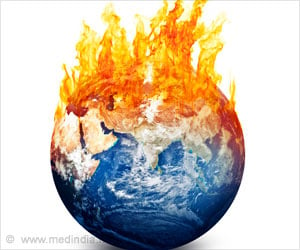
‘The Pacific region is vulnerable not only to the well-documented rising sea levels associated with climate change, but also to the more severe storms.’
Tweet it Now
The unusually intense storm caused rivers to overflow, flooding roads and sweeping away bridges and homes in the city of 64,000 people. The storm killed 31 people and was deemed per capita to be the world's most deadly single event disaster of 2014, according to the Centre for Research on the Epidemiology of Disasters. "This is the first study to catalog significant health impacts from our changing climate in the Pacific region," said lead author Eileen Natuzzi, a general surgeon and public health researcher at San Diego State University.
"The findings support the notion that this region is vulnerable not only to the well-documented rising sea levels associated with climate change, but also to more severe storms like this flood, which we witnessed as well as cyclones like Pam and Winston that have followed it."
The floods were particularly dangerous to children. Twenty-one died in the floods -- most were children under 14 who were swept away -- and 10 more children died of diarrhea and related complications in the days to follow. The storm broke water and sewer lines, and three of Honiara's nine health clinics were flooded.
One month after the storm, reports of infectious disease transmission reached a peak with 2,134 cases of flu-like illness and 3,876 cases of diarrhea, mostly among children under age five. Researchers still do not know what caused the disease outbreaks, because there was no detailed analysis of pathogens found in the drinking water in the weeks after the flood.
Advertisement
"Our findings could help governments and those providing aid improve readiness and response in order to save lives," said Natuzzi. Some strategies could include moving housing and hospitals away from flood-prone areas. "We can't change the weather, but we can change the capacity of communities to cope with the aftermath of extreme weather events," Natuzzi said.
Advertisement








